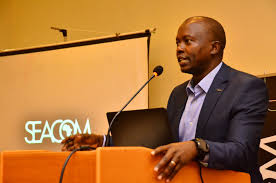SEACOM Launches SD-WAN in Kenya for Digital Transformation
Africa’s leading ICT service provider SEACOM is expanding to bring its software-defined wide area networking (SD-WAN) services to Kenyan businesses, offering reduced connectivity costs, increased security, agility, and local support to customers. The company is deploying its vast experience in ICT towards ensuring full digital transformation across the continent.
It could be recalled that SEACOM launched Africa’s first broadband submarine cable system in 2009 and provides continent-wide secure Internet. It also offers a full suite of communications and cloud solutions that enable the growth of Africa’s digital economy. Their new SD-WAN services are now available to Kenyan businesses.

The addition of managed SD-WAN to SEACOM’s services is great news for Kenyan businesses. With the increased global adoption of cloud applications, mobile workforces, and voice and video communications becoming the new norm, traditional networks have been placed under significant pressure to meet increasing demands. Using a legacy network solution can easily lead to exorbitant transport costs, poor end-user experience, security vulnerabilities, and unsuitable management capabilities. With data traffic sure to increase exponentially over time, having a future-ready network solution has become a business imperative.
Read also:National Bank Of Egypt Adopts RippleNet Blockchain Technology
For businesses digitising their operations, network security is another growing concern. Cyberattacks are becoming more widespread and advanced, but upgrading hardware-based firewalls across various branches can easily become unmanageable and costly. Traditional networks also have limited visibility and control over network access, which necessitates a more modern approach to network security.
SD-WAN is an adaptable network solution that solves these problems and meets modern network requirements. The new SD-WAN allows businesses to transform their business networks into smart, intelligent, and cloud-ready networks. It simplifies the management and operation of an enterprise’s networks by using centralised software to control the connections and services between data centres, computers, and cloud-based servers. Tonny Tugee, Managing Director at SEACOM East and North East Africa, explains, “If you want to create more resilient branch networking operations, dynamically adjust to changing conditions, and empower business transformation and business continuity, SD-WAN can help.”
Network administrators can use SD-WAN to optimise bandwidth usage by dynamically routing different kinds of traffic through different transport routes to reduce usage costs, improve application efficiency, and strengthen network security.
Read also:Three Important Reasons for African SMEs to Revise their Business Models Post-COVID
Using multiple Internet services from different providers improves connectivity resilience, but managing all of the different services and last-mile technologies in a wider business network is challenging. With SD-WAN, business have the flexibility to use dynamic rulesets that route certain data traffic through either cheaper or more reliable transport routes. During network failures or downtime, it can also ensure that traffic is automatically rerouted so that businesses don’t experience the negative effects of a break in connectivity.
With traditional network solutions, data traffic would usually have to be hauled to a data centre for security filtering before it can be routed to the cloud, slowing down application performance. SD-WAN is designed for applications hosted in different environments, including on-premise data centres, public or private clouds, or SaaS platforms, so businesses can expect improved speed. It also offers real-time visibility into application traffic and performance to ensure session quality of business-critical applications.
Read also: Why Mobile Technology is Important to Rural African Communities
Tonny says that in delivering SD-WAN solutions, SEACOM has partnered with leading global organisations to provide Kenyan customers with modern and secure networking capabilities. “We understand that customer requirements are unique; instead of offering a one-size-fits-all solution, our team will look at a business’s existing infrastructure and apply the best vendor to address the customer problem.”
If businesses want to meet growing network demands and transform their networks with a solution that is intelligent, flexible, and cloud ready, they need to take advantage of SD-WAN. The best way to do that is to choose a reliable partner that understands your business requirements and knows how modern networks have changed.
Kelechi Deca

Kelechi Deca has over two decades of media experience, he has traveled to over 77 countries reporting on multilateral development institutions, international business, trade, travels, culture, and diplomacy. He is also a petrol head with in-depth knowledge of automobiles and the auto industry




